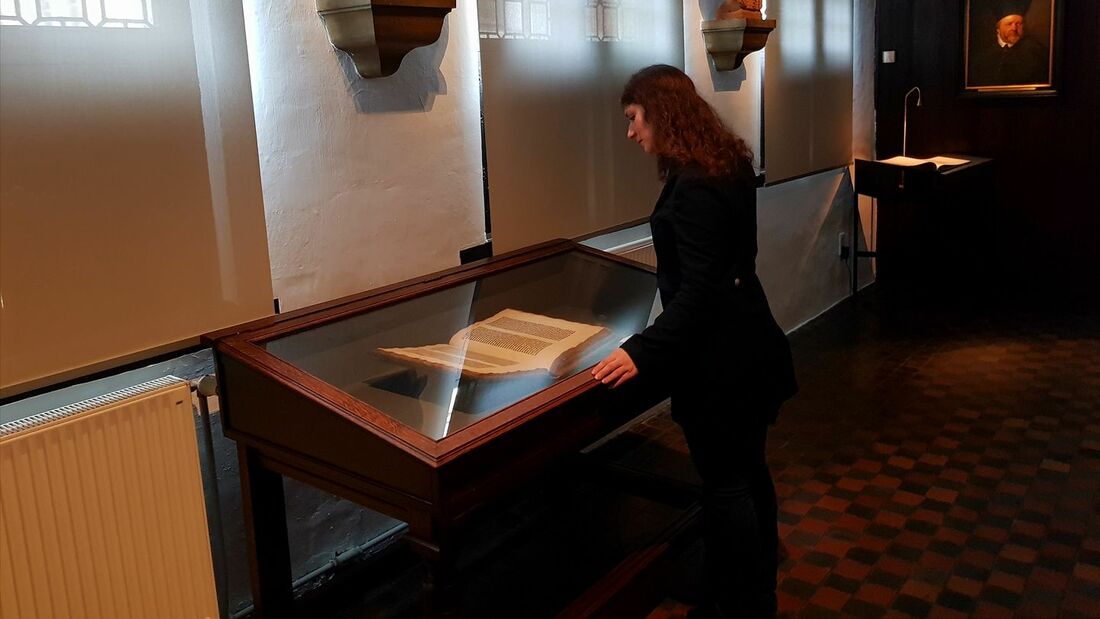We spent our day in Antwerp at the wonderful Museum Plantin-Moretus, a beautiful mix of the renaissance and baroque. Here we got to see two of the oldest printing presses in the world, the original lead fonts such as Garamond, and ancient manuscripts telling the story of how writing evolved into the art of printing. It is easy to see why this is the only museum in the world to be recognised as a UNESCO World Heritage site,
The museum is housed in the original residences and workshops of the Plantin and Moretus publishing family. In his early career Christophe Plantin worked in various places, but by the late 1570s his success as a printer was pushing his business to the limits and he purchased the first building on the current site. Over his life Plantin added to the complex, as did the successive owners over the centuries.
Christophe Plantin was a true entrepreneur and not only ran a printing business, but also sold maps, prints, globes, and lace. Running such a big empire wasn't easy, and so it grew to include the whole family. His daughters learnt to read and write from a very young age, and were even helping in the print shop from the age of five! Due to the wide range of texts printed by Plantin, their education included Greek and Latin.
After his death his daughter Martina and son-in-law Jan Moretus took over the Antwerp shop, and their descendants kept the site until it was sold to the city in 1877. One of his other daughters, Margaretha, married Franciscus Raphelengius and they inherited the Leiden branch. One of their descendants founded what would become the Brill Publishers, which is still in existence today.
Highlights
The Gutenberg Bible - The ‘36-line Gutenberg Bible’ is named after the number of printed lines per column. It was the second Bible to have been printed in Europe and is the oldest printed work in Belgian. This work, printed with Johannes Gutenberg’s original type, goes back to the very beginnings of the printing revolution.
This particular copy traces its origins to the Augustinian monastery of Nuremberg. In 1514 it was donated to its new sister monastery in Antwerp, which closed in 1522 because of Lutheran sympathies. It is unsure how it ended up in Plantin’s library.
The Biblia Polyglotta - Plantin worked on this scholarly masterpiece from 1568 to 1578. Consisting of eight volumes (four Old Testament, one New Testament, and three commentaries), the Biblical text itself was printed in five languages: Latin, Greek, Hebrew, Chaldean (Aramaic) and Syriac.
The World's Two Oldest Printing Presses - The invention of printing in the fifteenth century brought about a cultural revolution that shook Europe and changed its political and cultural landscape forever. These two printing presses were built around 1600.
The Funerary Procession of Emperor Charles V - When Charles V died in 1558 his son was living in the Netherlands and so he organised a procession along the streets of Brussels in honour of his father. This 12 meter work is sold as a book or roll across Europe in the languages of the empire: French, Italian, Dutch, Spanish, and German. Even though Plantin gained the commission to print the short text only, this established his reputation as a publisher.
| | |
| | |


 RSS Feed
RSS Feed